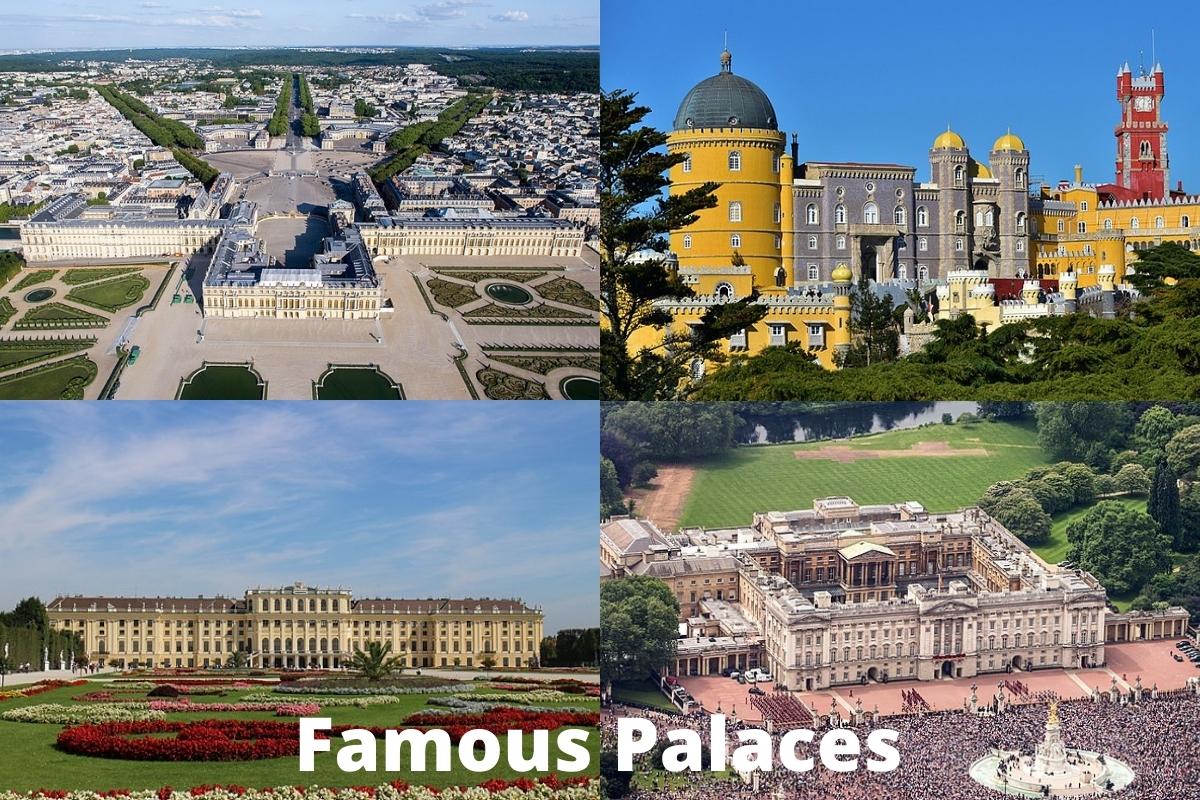From India to England, in an era where the monarchy built grand administrative palaces, some of which doubled as homes, architects displayed the amazing talent that is still revered today.
From mind-blowing facades to breathtaking gardens with sculptures and incredible interiors, here are 10 famous palaces that continue to wow and attract millions of visitors from across the world each year.
Famous Palaces
1. Palace of Versailles
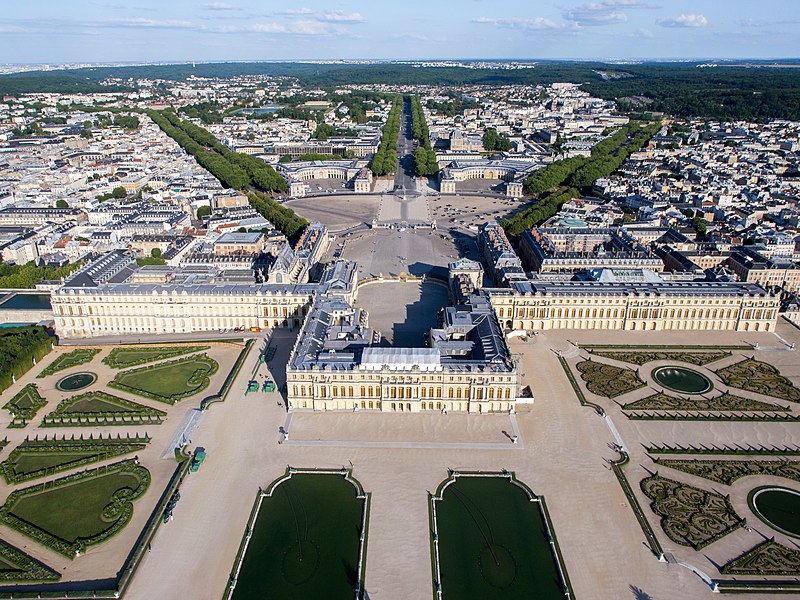
Château de Versailles, France, or Palace of Versailles is about 20 kilometers (12 miles) from Paris and is the site of a previous royal house.
In 1995, the French Republic acquired the palace, and its French Cultural Ministry has been overseeing it since.
A whopping 15,000,000 visitors annually visit the Palace, its gardens, and park, placing it among the most visited tourist destinations worldwide.
In 1623, Louis XIII erected a little hunting lodge on the future site of the Palace of Versailles, and then, between 1631 and 1634, he razed it and built a small château instead.
Because of the changes made by his predecessors, Versailles became France’s de facto capital. The French royal family and the capital were temporarily relocated to London in 1689, but they eventually returned to Paris in 1789.
In 1979, UNESCO recognized the palace and its surrounding park as a World Heritage Site for its significance as a political, cultural, and scientific epicenter in France throughout the 1600s and 1700s.
2. Buckingham Palace
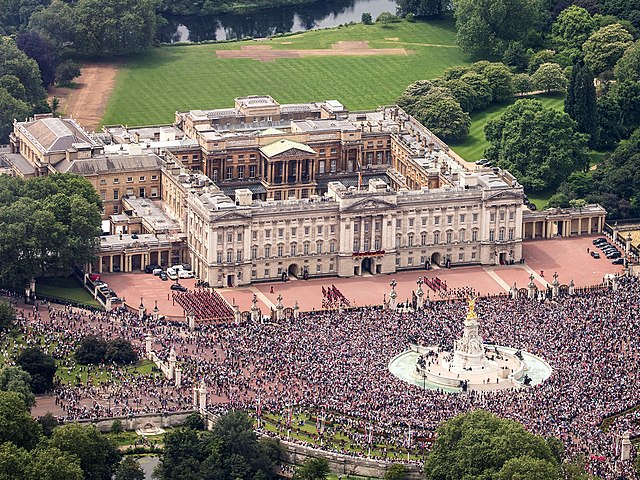
Buckingham Palace is both the royal residence and the administrative headquarters of the Queen of the United Kingdom.
It is home to the largest private garden in all of London and a staggering 775 rooms. Located in the heart of Westminster, it frequently plays host to both state and royal functions. The palace has served as a focal point for both national celebrations and national tragedies in Britain.
The heart of the current palace was a magnificent townhouse named Buckingham House, constructed in 1703 for Buckingham’s Duke on land that had been in private hands for at least 150 years prior.
King George III purchased the property in 1761 so that Queen Charlotte could have a place of her own, and it was soon deemed the Queen’s House.
Expanded in the 19th century, mostly thanks to architects Edward Blore and John Nash, who added three wings arranged around a courtyard.
In 1837, following Queen Victoria’s accession, the Palace became the Monarch’s official London home.
3. Schönbrunn Palace
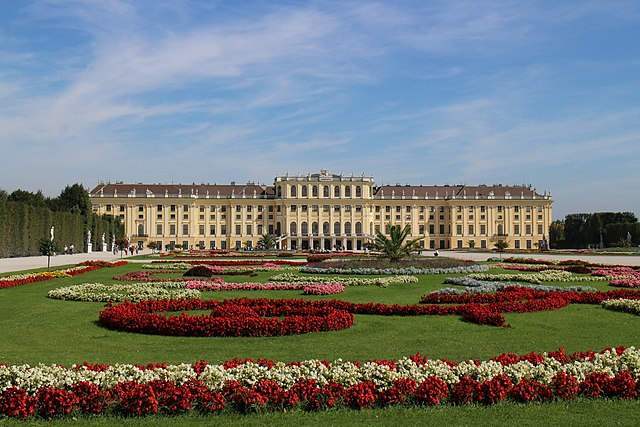
In addition to being one of Austria’s most prized cultural properties, Schönbrunn Palace has been a key lure for tourists to Vienna since the 1960s.
It is now recognized as a UNESCO World Heritage Site thanks to the efforts of the World Heritage Committee.
The origins of Schönbrunn, as well as the first structures to occupy this location, may be traced back to the 1300s. The estate was given its current name after the emperor, Matthias, stumbled upon a spring.
Late in the 17th century, Emperor Leopold I authorized a Baroque architect, Johann Bernhard Fischer von Erlach, trained in Rome, to create a royal hunting cabin to appease Crown Prince Joseph, who later became Emperor Joseph I.
It replaced the château de Plaisance and became a palatial imperial home for the rest of the eighteenth century.
4. Topkapı Palace
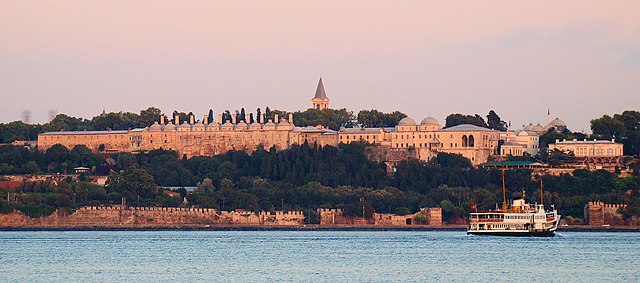
Topkapi Palace is an Istanbul museum inside a palace displaying the vast Ottoman imperial manuscripts and book collections inside its library. The palace complex was home to the Ottoman imperial court from around 1478 to 1856.
In 1924, a year after the founding of the Republic of Turkey, the building opened to the public as a museum.
The Ottoman Empire’s culture and history are evoked by the Topkapi Palace Museum, making it more famous than its design and contents. It probably has a more interesting history than all the museums in the world put together.
In its time as the Ottoman court, it was home to cunning eunuchs, attractive concubines, ambitious courtiers, and libidinous sultans. Mehmet the Conqueror lived at the palace from its initial stage of construction in 1453, shortly after the Conquest, until he died in 1481.
5. Alhambra Granada
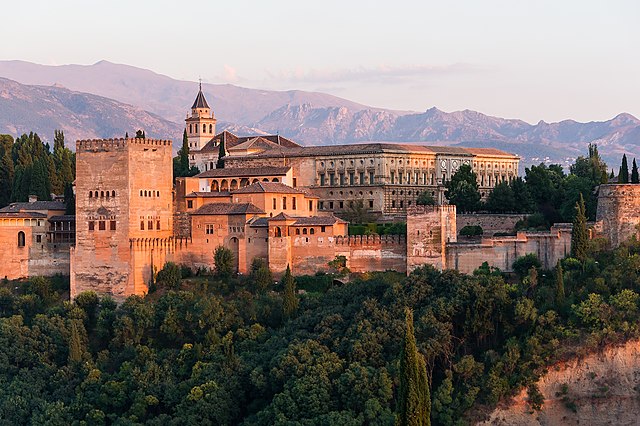
The Alhambra, or “The Red Fort,” is a palace and fort in Spain. It’s one of the best-preserved palaces from the ancient Islamic civilization and one of the greatest examples of Islamic architecture around the globe. There are important examples of Spanish Renaissance architecture throughout the palace.
The three main royal residences of the Alhambra are its most renowned buildings. Each of these palaces, the Partal Palace, the Palace of the Lions, and the Comares Palace, was constructed in the 14th century. And then the Christian king, Carlos V, started construction on a massive new palace.
Also Read: Castles in Europe
Buildings on the Alhambra’s nearly 26 acres serve three distinct functions: as a palace for the sultan and his immediate family, as an elite guard barracks with the task of up-keeping the complex’s security, and as a residential and commercial district for court officials known as the medina, located close to the Wine Gate.
6. Mysore Palace
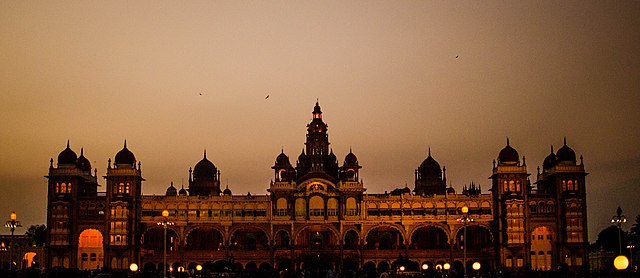
The Mysore Palace in the city of Mysore in the Indian state of Karnataka is a stunning illustration of the Indo-Saracenic architectural style.
Also called the Amba Vilas Palace, it remains the main residence for the royals. In 1912, Mysore Palace, among the largest palaces in India, was created for the Wodeyar dynasty’s 24th leader.
Maharaja Krishnaraja Wadiyar IV oversaw the place’s construction and his son expanded it later. The palace’s exterior is an elegant synthesis of Gothic, Rajput, Muslim, and Hindu design elements, giving it an imperial air. On the east side, the Chamundi Hills make Mysore Palace a lovely sight.
Mysore Palace, now housed within the Old Fort, is well-known for its spectacular Dussehra sound and light spectacle.
7. Winter Palace
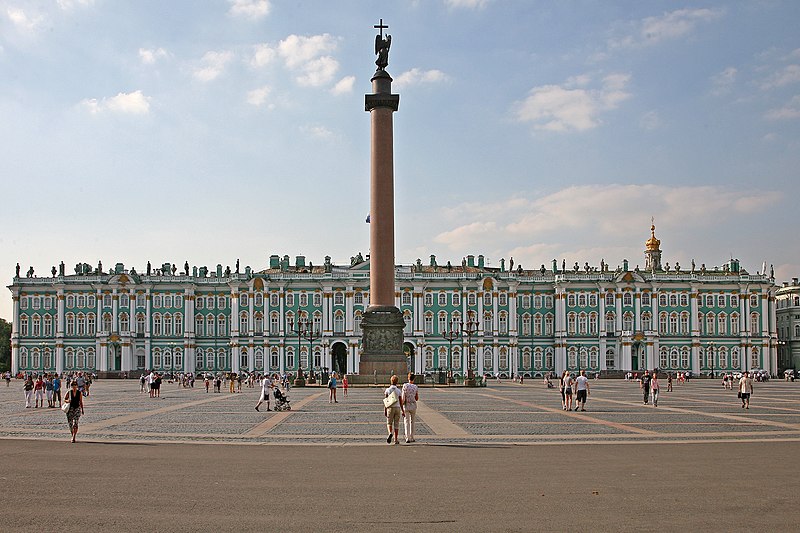
The Winter Palace, the city’s most recognizable structure, has contributed to St. Petersburg’s political, ceremonial, and cultural life for the better part of three centuries and continues to dominate Palace Square as well as the south riverbank of the Neva River.
In 1708, Peter the Great had a Dutch-style wooden house constructed for his family on the future site of the Winter Palace.
In 1711, when it burned down, a stone structure replaced it, the remnants of which are now the Hermitage Theatre. The historic palace has been partially repaired and is now accessible to visitors.
Being the initial direct descendant of Peter, Empress Anna Ioannovna rebuilt the palace. In 1731, she ordered the construction of a new, grander palace, and gave the job to Francesco Bartolomeo Rastrelli, the newly chosen court architect who became the acknowledged Russian master of late baroque. A fourth reconstruction happened in 1754.
8. Potala Palace
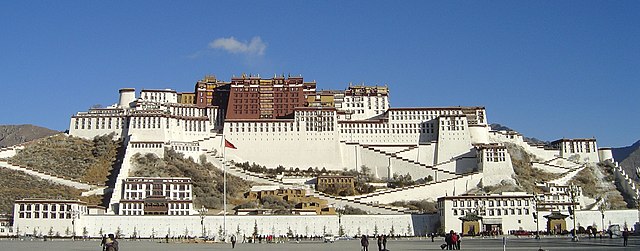
The Potala Palace in Lhasa, Tibet Autonomous Entity, China’s southwest corner, is a vast religious as well as governmental compound. It rises sharply from the rocky slopes of Red Mountain (Mar-po-ri) where it has been perched for centuries, to a height of 425 feet (130 meters) over the Lhasa River valley.
Potrang Karpo was the official Tibetan administrative palace as well as the Dalai Lama’s main home until the middle of the 18th century when it was converted into a winter palace.
To this day, Tibetan Buddhists make the journey to Potrang Marpo to pay their respects at the graves of eight Dalai Lamas, visit the many sacred sculptures, and pray at the many chapels.
The 1000+ room religious compound is home to almost 200,000 sculptures plus 10,000 shrines.
The Palace Museum was spared destruction throughout China’s Cultural Revolution because its significance was acknowledged by the country’s Cultural Relics Commission. In 1994, the Potala became a part of the UNESCO World Heritage list.
9. Kensington Palace
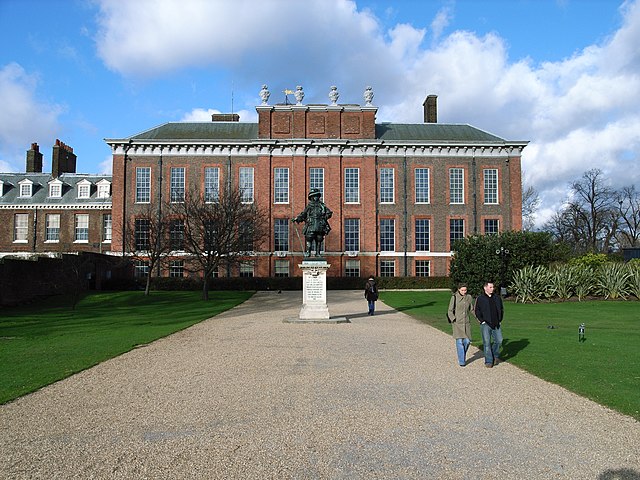
Nottingham House, the forerunner to what is now Kensington Palace, was a modest suburban mansion. In 1689, the new rulers, William III as well as Mary II, made this starter home their rural getaway.
Over the years, the castle was renovated by Stuart and Georgian rulers to become a chic residence for Britain’s young royal dynasties.
Both the palace and its gardens were redesigned by Queen Caroline, and later, young Queen Victoria called them home.
It wasn’t until 1837 that she moved out of the palace and into Buckingham. Her daughter, the gifted sculptor Princess Louise, later made Kensington home for younger royals.
Princess Margaret, Diana, the Princess of Wales, and Prince Harry and Meghan, Duchess of Sussex, are some of the more recent residents of the palace. It is also where the Cambridges and their children spend much of their time in London.
10. Pena Palace
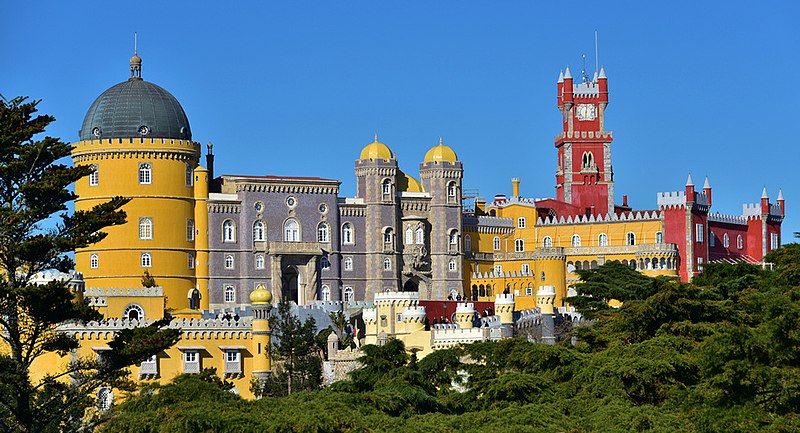
One of Portugal’s famous places, the Palacio Nacional da Pena, is a stunning example of the Romanticism architectural style popular in the 19th century.
The rich greenery of the Parque de Pena forest provides a clear distinction to the decadent combination of brightly colored balconies, ornate battlements, and legendary figures that make up the palace.
The Pena Palace’s rebuilt interior is just as interesting as the exterior, having been furnished in the style of the period 1910, while the Portuguese aristocracy escaped to Brazil to avoid the uprising.
The wooded gardens of the Palacio da Pena are a continuation of the Romantic principles of landscape architecture; they have secret passages, magical embellishments, and breathtaking vistas.
There is a very strenuous 50-minute upwards trek from the railway station to the Palacio da Pena, which is located at the summit of a high hill (480m). The 434 tourist bus is the most popular mode of transportation to get there.

